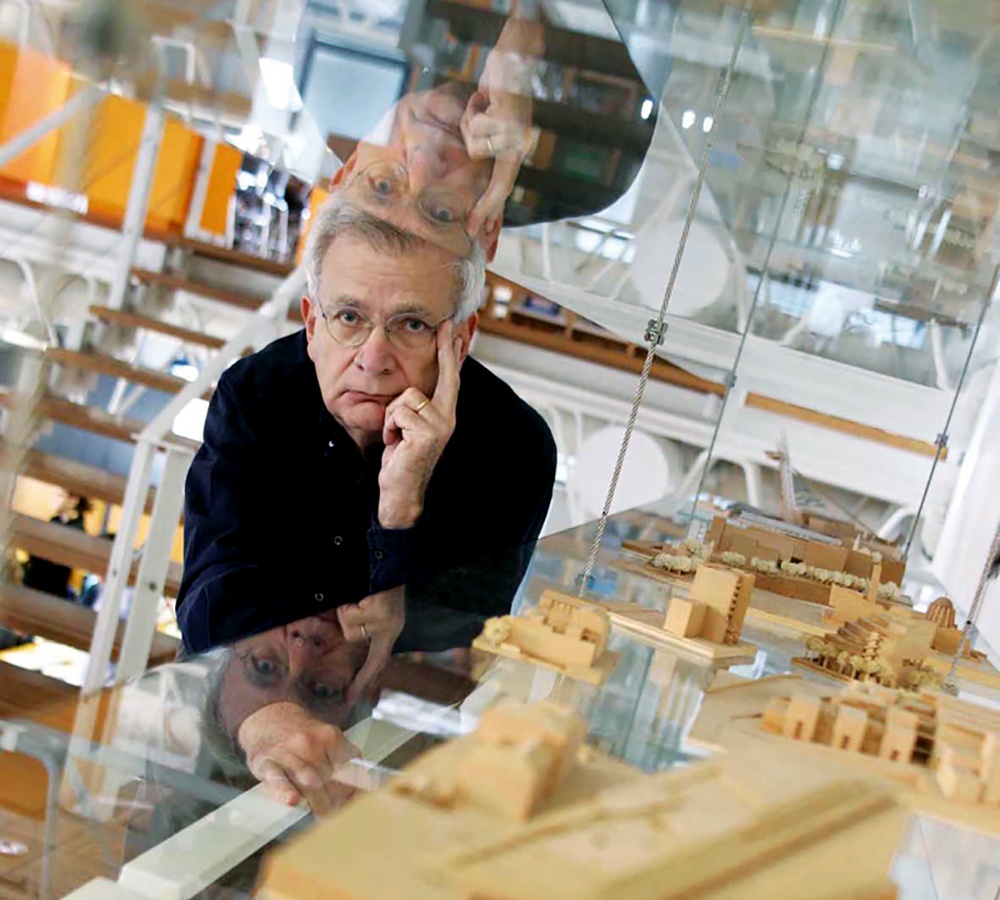ArchiTravel interviews the architect Alexandros Tombazis.
Interview by : Alexios Vandoros
Alexios Vandoros: What is the importance of architectural tourism?
Alexandros Tombazis: To learn one has to compare. To learn about architecture one has to experience space. It is as simple as that. There is no other way in architecture. There is no comparison to experiencing any other form of the arts. Even sculpture, which is the closest relative to architecture, needs to be experienced in three dimensions. You can listen to recorded music, watch a cinema movie, you can see the reproduction of a painting etc., but architecture as seen on film or in photographs is just not the same as the actual thing itself.
Winston Churchill has beautifully said: “We shape our buildings; thereafter they shape us”. Here I dare add: cities too. So in order to appreciate a city it is necessary to experience its exterior spaces and the spaces that are formed by buildings. This is in sequence what creates urban texture and human context, culture and society.
It is for this reason that I believe that architectural tourism is of paramount importance, both for the visitor, but for the visited too, as it puts the place on the map, it gives it importance and meaning.
A.V.: Can you please provide your personal proposal for 10 buildings which you think as the most important worldwide that someone must visit anyway?
A.T.: I cannot offer a list of the ten most important buildings to visit, the reason being that, most likely, they would be the most obvious listed by everybody and ten are in no way enough. The selection depends on the point of view and, if this were not the case, it would mean searching for unusual suggestions just to make an impression.
I can, however, just in order to be constructive and not negative, suggest ten buildings of our own that people may not even have heard of. And these are:
- The Church of the Most Holy Trinity at the pilgrimage place of Fatima, Portugal. The Sanctuary of Fatima is worth visiting on one of the festive occasions, when its vast plaza can be filled with 200-500 thousand pilgrims. The prevailing spirit of faith is inspiring even for non-believers. On the other hand one can find oneself all alone in this vast enclave and experience moments of special beauty and serenity. The new Church of the Most Holy Trinity was built in order to provide shelter for prayer and other activities for the approx. 9.000 pilgrims who come to Fatima for mass on Sundays.
- Bin Madiya Mosque, Dubai, U.A.E
- General Cement Company Headquarters, Lykovryssi – Athens, Greece
- “Difros” Highrise Residential Complex, Agia Varvara, Athens, Greece
- Alpha Bank Office Building and Bank Branch, Athinon Avenue, Athens, Greece
- Office Building Complex and Architects’ Offices, Polydroso, Athens, Greece
- Athens College, Bodosakeio Elementary School, Kantza, Athens, Greece (in collaboration with Perkins and Will Chicago)
- Schools of Economics, Public Administration and Classical Studies, University of Cypus, Nicosia, Cyprus (in collaboration with A. Gabrielides architects, Nicosia)
- Oranje – Nassaukazerne apartment towers, Amsterdam, The Netherlands (six foreign architects from different countries – Koji Yagi-Japan; Cuno Brullmann -France; Patrick Pinnell – USA; Tage Lyneborg – Denmark; Jeremy Bailey – U.K.; A. Tombazis – Greece – were invited to each design an apartment tower in central Amsterdam. General coordination: Atelier PRO (Hans van Beek )- The Hague. Interesting from the point of view of an open-minded exceptional multi-national collaboration).
- Museum of Delphi, Delphi, Greece.
I would also suggest that the following cities are absolutely worth visiting in the context of contemporary architecture:
- Barcelona
- Brasilia
- Berlin
- New York
- Tokyo
- Canberra
- Columbus (Indiana).
More on : Alexandros Tombazis
About this Author : Alexios Vandoros




